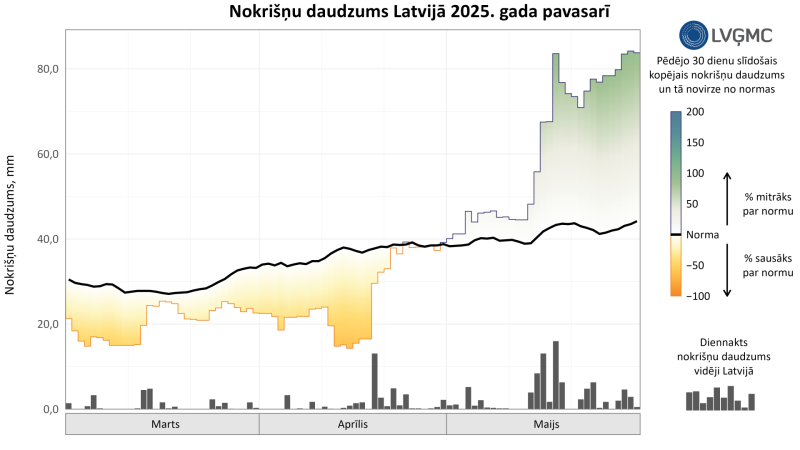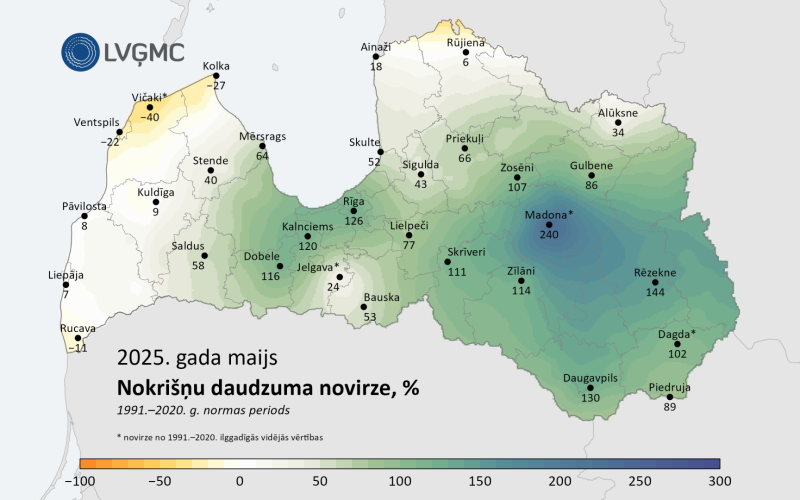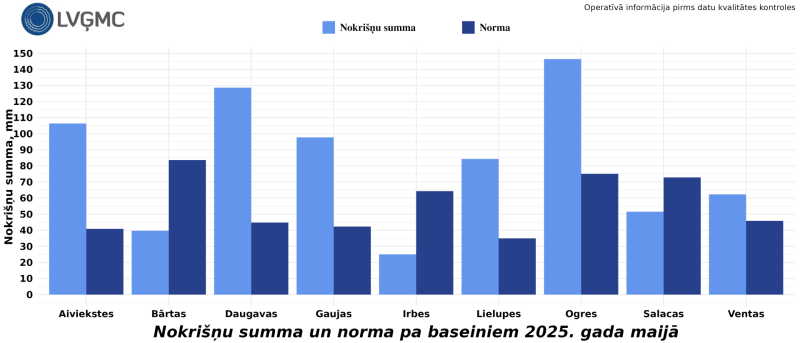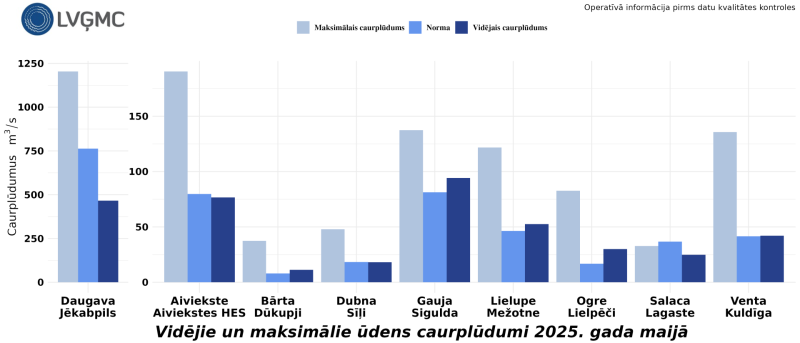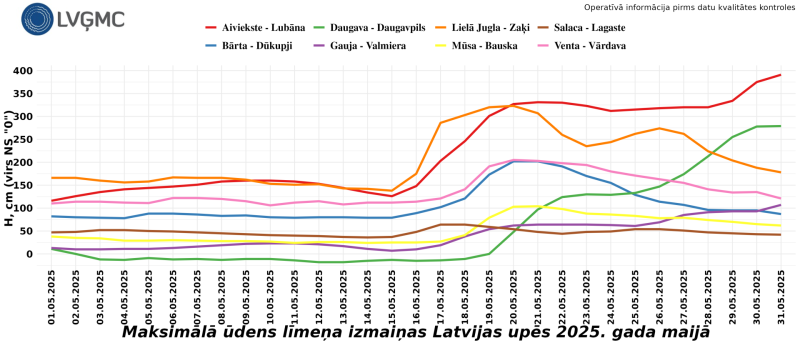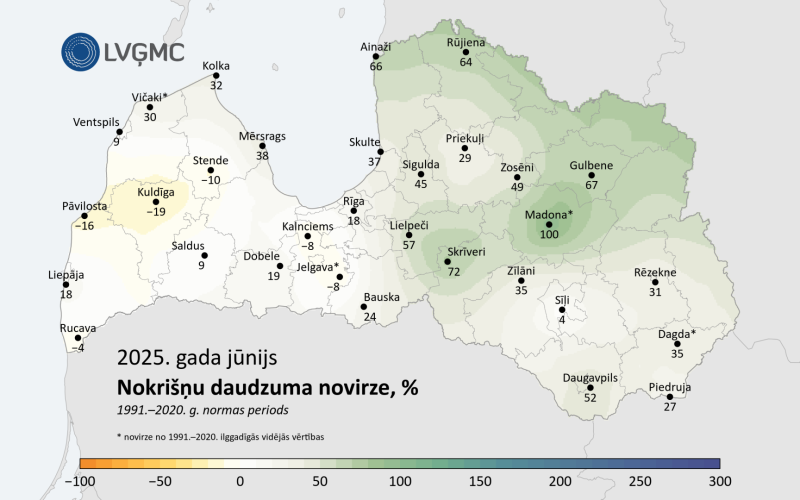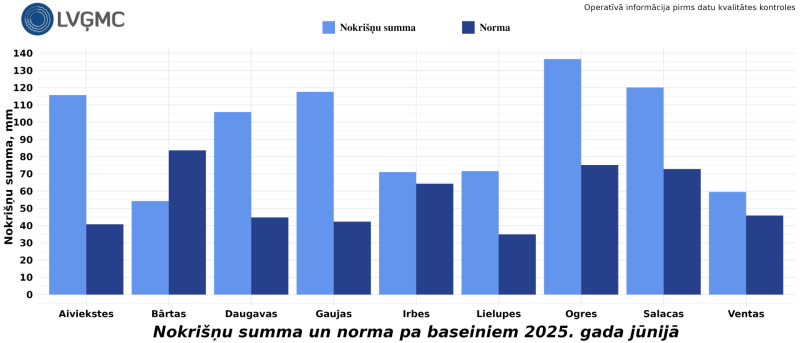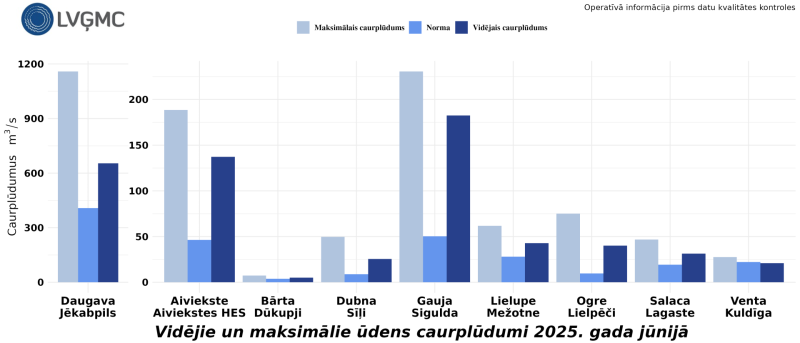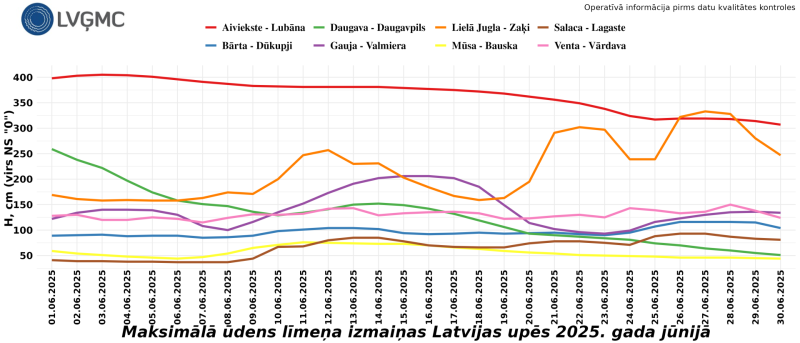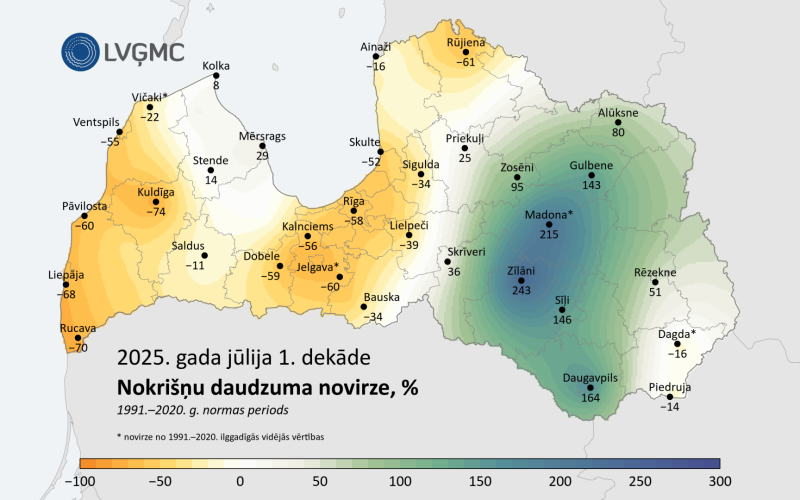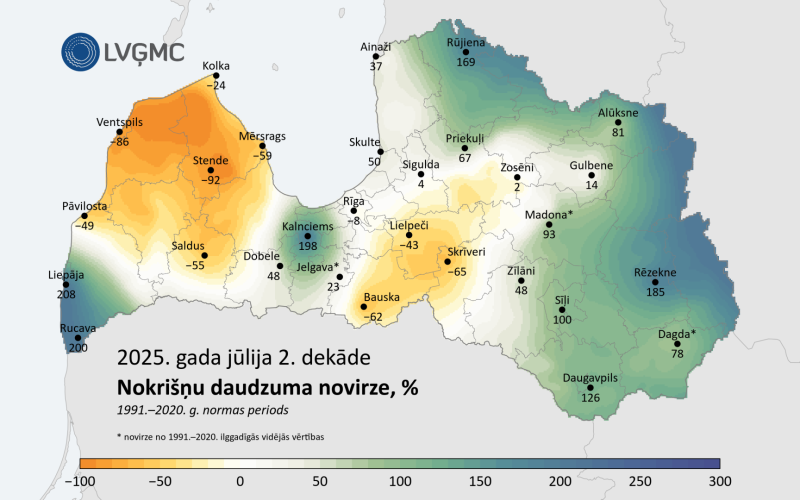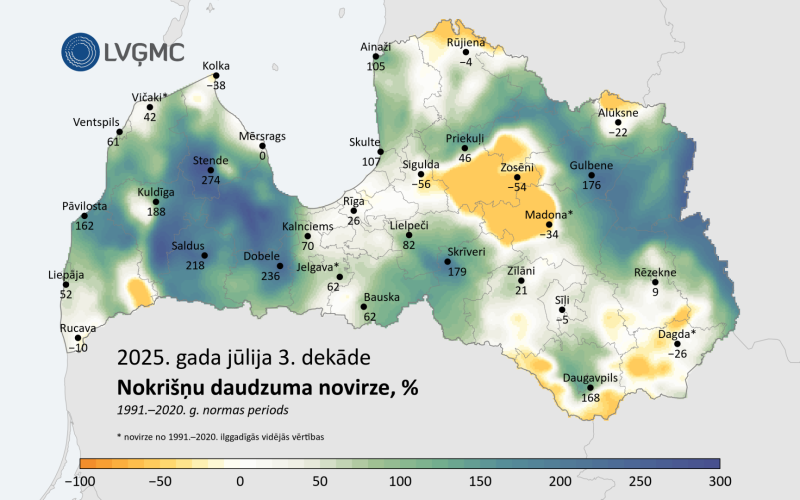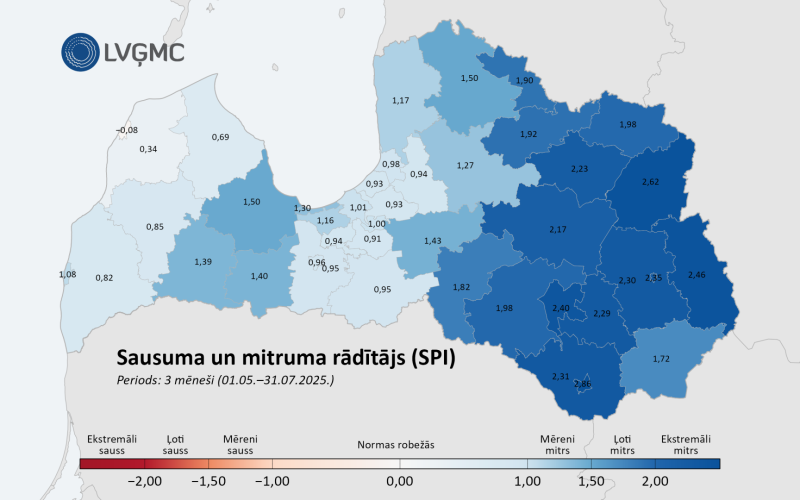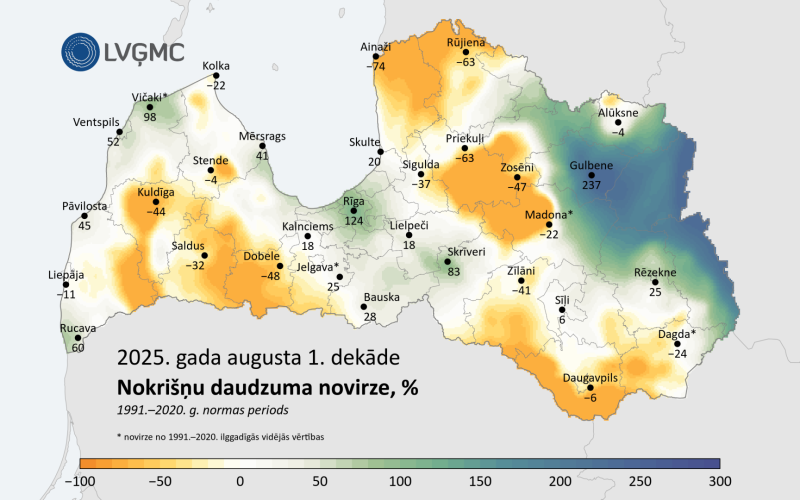According to information from LEGMC, the situation did not improve in June, when the total amount of precipitation in Latvia was 91.1 mm, which is 30% above the monthly norm (70.1 mm), in some places even exceeding it twice. The highest amount of precipitation (146.5 mm) was recorded in Madona, while the lowest was in Pāvilosta – 42.9 mm. On average, Latvia had 13.9 days in June with at least 1 mm of precipitation. The most such days were in Gulbene – 18 days, and the fewest in Pāvilosta – eight days.
Table 6: This map shows deviation of precipitation in June 2025 compared to the 1991–2020 climate norm in Latvia (expressed as a percentage). Green areas had significantly higher rainfall than usual. Yellow/orange areas had below-average rainfall. June 2025 was wetter than average in most of Latvia, especially the east and center, but drier in the west.
Information from LEGMC on the situation in Latvian rivers in June 2025.
Compared to the long-term average, the lowest amount of precipitation in June was observed in Bārta basin, where precipitation amounted to 65% of the norm. It was significantly wetter in Irbe, Venta, Salaca, and Ogre basins, where the observed precipitation was above the long-term average: 111–182% of the monthly norm. Meanwhile, an even greater amount of precipitation was recorded in Lielupe, Daugava, Gauja, and Aiviekste basins: 205–284% of the monthly norm.
Table 7: This chart shows precipitation totals compared to the norm across different river basins in Latvia for June 2025. The light blue bars represent the actual precipitation amounts. The dark blue bars represent the long-term norm. It highlights where rainfall was above or below the usual levels for each basin (Ogre and Gauja basins had much more rainfall than normal, while Lielupe and Venta had less).
In June, the average river runoff mostly remained well above the long-term average indicators. Only in Venta runoff stayed slightly below the norm – 94%. In other river basins, water level was considerably above the norm – in Bārta, Lielupe, Daugava, and Salaca basins: 131–163% of the norm. Even higher water level was observed in Dubna and Aiviekste basins: 290% and 295% of the norm, respectively. Meanwhile, extremely high water level was recorded in Gauja and Ogre basins: 363% and 415% of the norm, respectively. In many places, the maximum river runoff in June was similar to that usually observed in spring floods.
In the last week of May, as well as in the first half of June, several precipitation zones reached Latvia, bringing heavy rains in many places, especially in the eastern part of the country. After the rainfall in the eastern part of Latvia, in Latgale and Vidzeme, large areas in the countryside and low-lying areas on the banks of water bodies, especially in Gauja and Daugava river basins, were flooded for a long time.
At the beginning of June, yellow-level warnings were issued for high water levels in the eastern part of the country.
By the middle of the month, water levels in the rivers had stabilized; however, at the end of June (especially during Midsummer), heavy rains again affected large areas, and river water levels began to rise. In the rivers of the eastern part of the country, water levels remained raised throughout the month, and a low-water period did not occur.
At the beginning of the month rain washed out roads. Fields and gardens were flooded, farmers had rotten crops.
Table 9: This graph shows changes in maximum water levels in different rivers of Latvia during June 2025. Each colored line represents a river monitoring station (Aiviekste–Lubāna, Daugava–Daugavpils, Gauja–Valmiera, etc.). The vertical axis shows water level. The horizontal axis shows days in June 2025. It illustrates how river water levels fluctuated over the month.



